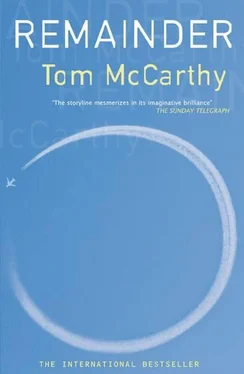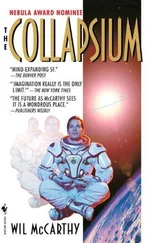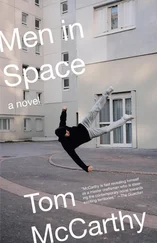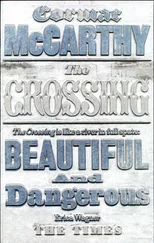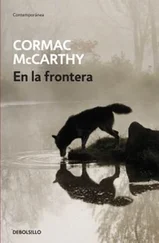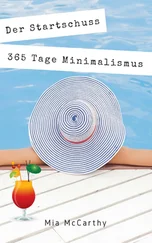“I’d like you to facilitate another project I’m considering,” I said.
“Certainly,” Naz replied. “Tell me about it.”
“I should like a certain area,” I said, “to be reproduced exactly.”
“A small section of the building?” he asked.
“No,” I said. “Another place. A tyre repair shop.”
“That shouldn’t be a problem,” Naz said. “If you tell me where it is, I’ll give Roger a call right now and get him to knock you up another model.”
“It’s not a model I require,” I told Naz. “It’s a full-scale reproduction. I should like Roger to reproduce this tyre shop exactly, down to the last detail. Furthermore, I shall require re-enactors to run through a certain event which I’ll outline later. These re-enactors must be children: three of them, aged fifteen, thirteen and eleven. Plus one man of my age. Four people in all, plus back-up. I shall require them to run through this event constantly, round the clock.”
There was a pause at Naz’s end. I pictured his office in the blue-and-white building, how the desks were laid out, the telescope by the window. After a while he said:
“How can they do that?”
This was a good question, but I had the answer:
“We’ll have several teams,” I told him, “relieving one another, in relay.”
“In relay?” he said.
“Yes,” I answered. “We rotate them.”
There was another pause at Naz’s end. I concentrated on his office again, clasping the phone. Eventually he answered:
“Fine.”
His people found a warehouse out at Heathrow. It was on the outskirts of the land owned by the airport-one of a row of old hangars for small private aircraft that the corporation running the whole place hired out. It was large enough to contain a full-scale reproduction of the tyre shop itself-including roof with tyres and garish model baked-beans tin-and of the road outside it where the boy in the Michelin Man suit had swayed beside the spinning sign that said “TYRES TYRES”-and where, of course, the sticky liquid had exploded from my dashboard and cascaded over me.
They also paid the real tyre people, the men who’d been inside the café when the episode had happened, half a grand-nothing-to let Roger, Frank and Annie come and detail everything about the shop: the layout of the shelves, the products on them, their positions, age and state of wear, the dimensions of the garish model baked-beans tin, the lathe inside with its pedals and its clamps, the blue tube full of air and so on. The instruments all had to work, of course. The owner of the real tyre place, a round man of forty-odd, came out and taught us how to use all the equipment. He trained up a team of ten fifteen-year-old boys until they knew how to dip tyres in water and look out for silky bubbles, how to clamp and turn the wheel with their feet while daubing glue on, how to reach their hand behind them to collect the tube of air and guide it to the valve without needing to turn their heads. It took a while.
As far as positions and movements were concerned: I took care of these myself, as before. I showed the Michelin Man boy re-enactor where to stand and sway, and the other two how to kick his head between them. I made them kick it with a minimum of movement, hammering it with their legs mechanically, like zombies or robots. The driver, the person re-enacting my role, had to get out slowly. Like the concierge, he wore a white ice-hockey goaltender’s mask, so as not to overrun my personality with his-or, more precisely, so as not to impose any personality at all. I just wanted the motions and the words, all deadpan, neutral-wanted the re-enactors to act out the motions without acting and to speak the words without feeling, in disinterested voices, as monotonous as my pianist. The oldest boy had to take the tyre from the boot, carry it over to the lathe and fix it; the middling one had to attempt to help him lift it and the oldest had to push his hand away; the youngest one had to come over and then lurk outside the door. I showed them where to step, to lift, to kick, to stand. Most of the time they only had to stand, completely static.
We were ready to go after ten days. I’d had a raised viewing platform built, a little like an opera box, because I’d enjoyed watching the action in my building from above and wanted to have a similar option here. I’d established that I might roam around the re-enactment area itself, and that the re-enactors shouldn’t be put off by this. I chose to begin watching the re-enactment from the platform, though. At some point in the afternoon of the tenth day after the original event, Naz signalled up to me that everything was ready; I nodded back down to him and it began.
A strong fan was switched on in front of the TYRE-TYRE sign, to make it spin. Seconds later the blue Fiesta drove slowly across the warehouse floor past the Michelin Man boy and pulled up next to where the two older boys were kicking his head to one another. The driver, wearing a white ice-hockey mask, stepped out. Slowly, in a monotone, the oldest boy intoned the words:
“You’ve-got-a-dent.”
There was a pause before the driver answered:
“I-know-that-that’s-not-why-I’m-here.”
There was another pause. This was good, very good. They were avoiding all eye contact with one another, just as I’d instructed them. I experienced a sensation that was halfway between the gliding one I’d felt when my liver lady had spoken to me on the staircase during the first re-enactment in my building and the tingling that had crept up my right side on several other occasions. This mixed sensation grew as we reached the part where the boy intoned the words:
“I-am-real.”
When the sticky blue liquid exploded, I’d meant to leave my box and go down to the car to watch, but found myself fixated where I stood. I could see the re-enactor playing me splattered in the driving seat: his legs spread, his arms raised beside the wheel, his body powerless as the two litres descended on it. The mixed sensation grew still stronger, and I was riveted to my spot on the platform. I made it down the second time round, when the sensation had subsided. This time I stood beside the car and watched the liquid gush out. Frank and Annie had created a whole mini plumbing system in the car, that siphoned the blue liquid off into a sack which was triggered to rupture when the engine was turned on a second time. It wasn’t gushing out quite right, but it was complicated. It took two more run-throughs to tweak that bit. There were other minor hitches: the air in the blue tube hadn’t been set at the right pressure; the spare tyre wasn’t dirty enough to stain the boy’s overalls adequately-pretty minor things. On the whole it went well-very well.
The first team ran through it six times. Each run-through took twenty minutes, give or take a minute either side, plus a change-over of six or so minutes. I didn’t mind the change-over: I kind of liked the pause, the hovering as the sequence clocked itself, ran through the zero, started again. The first team did it for three hours, then the second team took over. I watched them do it six times too, then watched the third team do it twice. In the small hours of the morning I decided to leave.
“Shall I tell them to stop?” Naz asked me as I put my jacket on.
“No,” I said. “Absolutely not. They should continue. When they’ve done three hours replace them with the third team. Keep rotating them.”
“For how long?” he asked.
“Indefinitely,” I said. “Round the clock. And Naz?”
“Yes?”
“When you leave here yourself, have someone you trust stay and supervise, so no one does a pianist on us.”
“But he won’t be able to supervise it indefinitely,” Naz said.
A good point. I thought about it for a moment, then told him:
Читать дальше
